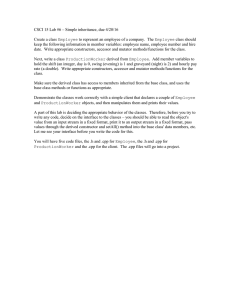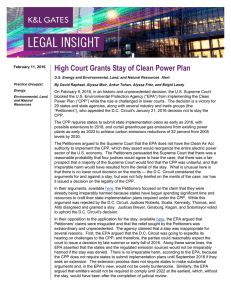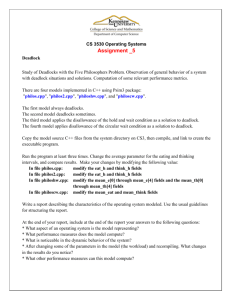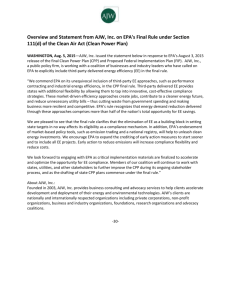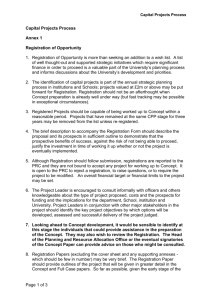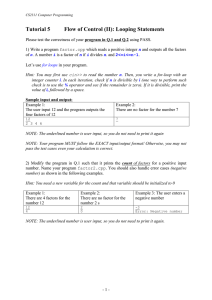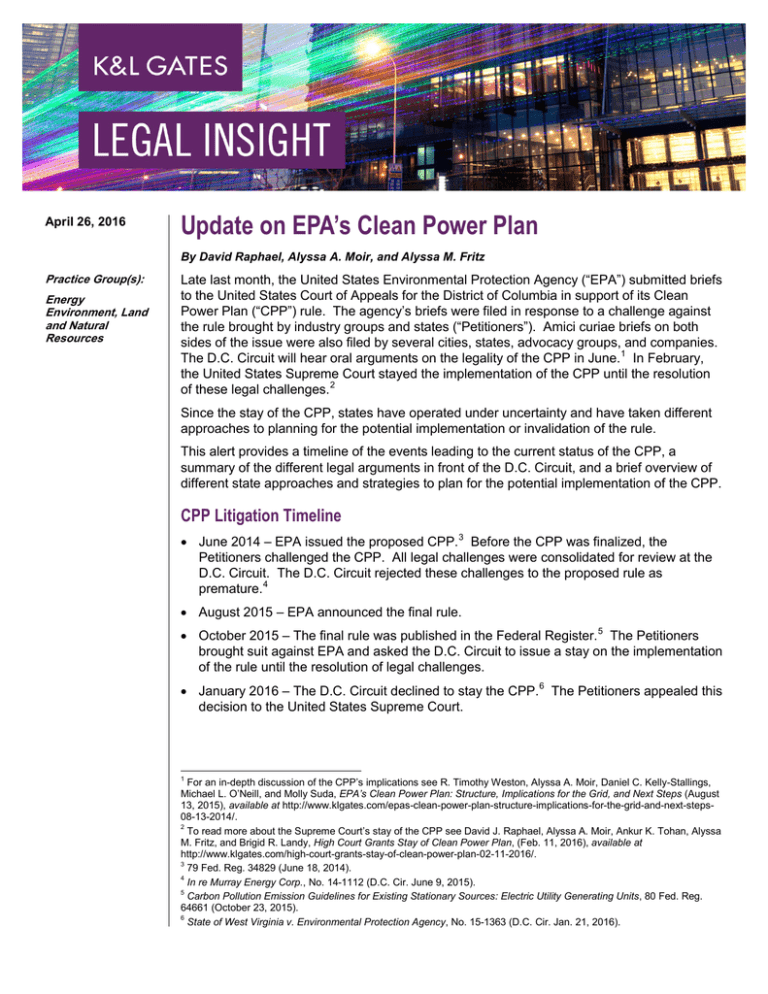
April 26, 2016
Update on EPA’s Clean Power Plan
By David Raphael, Alyssa A. Moir, and Alyssa M. Fritz
Practice Group(s):
Energy
Environment, Land
and Natural
Resources
Late last month, the United States Environmental Protection Agency (“EPA”) submitted briefs
to the United States Court of Appeals for the District of Columbia in support of its Clean
Power Plan (“CPP”) rule. The agency’s briefs were filed in response to a challenge against
the rule brought by industry groups and states (“Petitioners”). Amici curiae briefs on both
sides of the issue were also filed by several cities, states, advocacy groups, and companies.
The D.C. Circuit will hear oral arguments on the legality of the CPP in June.1 In February,
the United States Supreme Court stayed the implementation of the CPP until the resolution
of these legal challenges. 2
Since the stay of the CPP, states have operated under uncertainty and have taken different
approaches to planning for the potential implementation or invalidation of the rule.
This alert provides a timeline of the events leading to the current status of the CPP, a
summary of the different legal arguments in front of the D.C. Circuit, and a brief overview of
different state approaches and strategies to plan for the potential implementation of the CPP.
CPP Litigation Timeline
• June 2014 – EPA issued the proposed CPP.3 Before the CPP was finalized, the
Petitioners challenged the CPP. All legal challenges were consolidated for review at the
D.C. Circuit. The D.C. Circuit rejected these challenges to the proposed rule as
premature.4
• August 2015 – EPA announced the final rule.
• October 2015 – The final rule was published in the Federal Register. 5 The Petitioners
brought suit against EPA and asked the D.C. Circuit to issue a stay on the implementation
of the rule until the resolution of legal challenges.
• January 2016 – The D.C. Circuit declined to stay the CPP.6 The Petitioners appealed this
decision to the United States Supreme Court.
1
For an in-depth discussion of the CPP’s implications see R. Timothy Weston, Alyssa A. Moir, Daniel C. Kelly-Stallings,
Michael L. O’Neill, and Molly Suda, EPA’s Clean Power Plan: Structure, Implications for the Grid, and Next Steps (August
13, 2015), available at http://www.klgates.com/epas-clean-power-plan-structure-implications-for-the-grid-and-next-steps08-13-2014/.
2
To read more about the Supreme Court’s stay of the CPP see David J. Raphael, Alyssa A. Moir, Ankur K. Tohan, Alyssa
M. Fritz, and Brigid R. Landy, High Court Grants Stay of Clean Power Plan, (Feb. 11, 2016), available at
http://www.klgates.com/high-court-grants-stay-of-clean-power-plan-02-11-2016/.
3
79 Fed. Reg. 34829 (June 18, 2014).
4
In re Murray Energy Corp., No. 14-1112 (D.C. Cir. June 9, 2015).
5
Carbon Pollution Emission Guidelines for Existing Stationary Sources: Electric Utility Generating Units, 80 Fed. Reg.
64661 (October 23, 2015).
6
State of West Virginia v. Environmental Protection Agency, No. 15-1363 (D.C. Cir. Jan. 21, 2016).
Update on EPA’s Clean Power Plan
• February 2016 – The Supreme Court granted the Petitioners’ application to stay the
implementation of the CPP during the pending litigation on the merits of the rule in the
D.C. Circuit. 7
• February and March 2016 – Briefs were filed in the D.C. Circuit Court regarding the merits
of the CPP.
• June 2016 – The D.C. Circuit court expects to hear oral argument regarding the rule on
June 2, 2016.
• Summer 2016 – The D.C. Circuit is expected to issue its opinion. The losing party is
expected seek certiorari to the Supreme Court. If the losing party appeals as expected,
the stay will continue until the Supreme Court either denies certiorari or issues an opinion.
If the Supreme Court does not grant certiorari, the stay will automatically be lifted. The
losing party also could decide to request en banc review at the D.C. Circuit, delaying an
appeal to the Supreme Court and further prolonging the stay of the CPP.
• 2017-2018 – The Supreme Court is expected to issue a decision either upholding the
rule, vacating the rule, or remanding portions of it to EPA.
Prior to the stay issued by the Supreme Court, states were subject to the following deadlines
under the CPP:
• September 2016 – Initial state implementation plans due to EPA.
• September 2018 – Final state implementation plans due to EPA.
• 2022 – Beginning of the compliance period.
• 2030 – States are required to satisfy the final requirements of the rule.
If the CPP is upheld it is unclear whether the deadlines will be postponed, and, if so, by how
long.
Summary of Legal Arguments Before the D.C. Circuit
In the briefs recently filed on the merits of the CPP, the Petitioners primarily assert that the
rule exceeds the scope of EPA’s regulatory authority under Section 111(d) of the Clean Air
Act (“CAA”). Section 111(d) is a little-used provision of the CAA that directs EPA to develop
emission standards for certain existing stationary sources where standards have been
established for similar new sources but air quality criteria have not been established for that
pollutant (in this case, CO2). According to the Petitioners, because the CPP would transform
the United States’ energy system, EPA must demonstrate that the CAA contains a clear
statement “compelling the agency’s reading of Section 111(d).” 8 Citing a footnote from
Justice Ginsburg’s opinion in American Electric Power v. Connecticut, the Petitioners assert
that, because power plants are regulated under Section 112 of the CAA, they cannot be
regulated again for a different pollutant under Section 111(d).9 Additionally, the Petitioners
contend that EPA’s longstanding interpretation of the rule has been to set emission rates that
7
Order, State of West Virginia v. Environmental Protection Agency, No. 15A773 (Feb. 9, 2016).
Opening Brief of Pet’rs at 23.
9
American Elec. Power Co. v. Connecticut, 564 U.S. ---- (Docket No. 10-174). That footnote, as cited by the Petitioners
in their brief, reads “'EPA may not employ [Section 111(d)] if existing stationary sources of the pollutant in question are
regulated under … [Section 112].”
8
2
Update on EPA’s Clean Power Plan
can be achieved by individual sources, rather than the entire electricity market in the
aggregate.
According to the 166 state and local business associations that submitted an amici brief in
support of the Petitioners, EPA misapplied Section 111(d) by imposing state-by-state
production limitations on fossil-fuel electricity generators, rather than setting emission
guidelines for stationary sources.10 Amici assert that the rule will threaten businesses and
raise the cost of operations throughout the entire economy.
In support of the rule, EPA asserts that it properly applied Section 111(d) and that the CPP is
premised on flexible and cost-effective emission-reduction measures that are already widely
employed by power plants. 11 According to EPA, Section 111(d) is ambiguous, and therefore
the court should defer to its reasonable interpretation of the statute under Chevron v. Natural
Res. Def. Council, Inc., 467 U.S. 837 (1984). EPA asserts that the effect the CPP could
have on the power industry is indirect and similar to other pollution limits created under the
CAA. 12 EPA’s brief asserts that the CPP limits emissions, but does not regulate any aspect
of energy generation, distribution, or sale.
In support of EPA, several tech companies (“Tech Amici”) submitted a brief arguing that the
CPP is consistent with current trends in the market. According to the Tech Amici, the
implementation of the CPP would help them and many other companies power their
operations in a way that is consistent with their environmental commitments and business
needs. 13 In addition, an investor-owned energy company that would be subject to regulation
under the CPP also submitted an amicus curiae brief in support of EPA, asserting that the
CPP is consistent with current trends and that the rule’s potential effect on power plants can
be successfully managed if the CPP continues to allow for flexible compliance
mechanisms. 14
Observers predict that the legality of the CPP will ultimately be decided by the Supreme
Court. With the death of the Justice Antonin Scalia, the composition of the Court has
changed since it ordered the stay, and commentators now think the fate of the CPP depends
on when a new Supreme Court Justice is confirmed. 15
Differing State and Industry Approaches
In the midst of the uncertainty surrounding the legality of the CPP, states have differed in
their approaches to planning for the potential implementation of the rule. Some states have
continued to plan as if the CPP were in effect, while other states have suspended any CPPrelated planning activities.16
10
Br. of Amici Curiae of 166 State and Local Business Associations at 12. Several other businesses, advocacy groups,
and members of Congress submitted amicus briefs in favor of the Petitioners.
11
Br. of Resp’t at 21.
12
Br. of Resp’t at 26.
13
Br. of Tech Amici, in support of Resp’t at 2-3. Several other companies, states, advocacy groups, and former EPA
administrators submitted amicus curiae briefs in support of EPA.
14
Br. of Amici Curiae at 3.
15
Clean Power Plan Hub: Rebalancing the Supreme Court, E&E Publishing, LLC.
16
States that support EPA and continue to plan under the CPP are California, Connecticut, Delaware, Hawaii, Illinois,
Iowa, Maine, Maryland, Minnesota, New Hampshire, New Mexico, New York, Oregon, Rhode Island, Vermont,
Washington, Massachusetts, and Virginia. States that have suspended planning under the CPP include Alabama,
Arizona, Arkansas, Colorado, Florida, Georgia, Indiana, Kansas, Kentucky, Louisiana, Michigan, Mississippi, Missouri,
3
Update on EPA’s Clean Power Plan
The states that have continued with their planning are doing so for a variety of reasons. For
some, planning continues because they would have had little difficulty meeting their CPP
goals thanks to robust renewable portfolio standards or participation in active carbon trading
regimes. Others continue their efforts for political or policy reasons, even if meeting their
CPP standards means an expensive shift in electric base load. States that continue working
on their state implementation plans include Pennsylvania, Virginia, Minnesota, Illinois,
Louisiana, Colorado, Idaho, Oregon Washington State, California, and most of the
northeastern states that are part of the Regional Greenhouse Gas Initiative. 17 In
Washington, for example, Governor Jay Inslee expressed that the state would continue to
plan for the CPP by submitting a state implementation plan to EPA or seeking an extension
under the rule; 18 the state is also moving forward with its proposed state-level rule to limit
emissions from all large industrial sources. Similarly, New York plans to move ahead with its
own actions to reduce carbon emissions, including the state’s requirement that 50 percent of
its electricity come from renewable sources by 2030, and Minnesota continues to examine
emissions trading coordination with its neighboring states as it drafts its compliance plan.
EPA intends to continue work with states that choose to continue planning under the CPP.19
In contrast, other states that had steep emissions cuts under the CPP or are heavily
dependent on coal economies, have halted work on their implementation plans and
introduced or enacted legislation barring work on or implementation of a state plan until legal
issues are resolved. This includes New Jersey, West Virginia, North Carolina, Indiana,
Kentucky, Georgia, Alabama, Mississippi, Arkansas, Michigan, Wisconsin, North and South
Dakota, Nebraska, Kansas, Oklahoma, Texas, Montana, Nevada and Utah.20 For example,
Wyoming enacted legislation that prohibits the expenditure of state money to produce a state
implementation plan while the stay issued by the Supreme Court remains in force and effect;
Kansas passed a similar bill blocking state agencies from working on a plan. Similarly, West
Virginia, which is leading the multistate challenge against the CPP, will not submit an
implementation plan if the rule remains the subject of active proceedings. Likewise, upon
news of the stay, Montana suspended the work of a panel appointed to address the CPP. 21
Under the CPP, Montana faced the steepest carbon dioxide cuts of any state. Even in states
where “business as usual” would still mean meeting the CPP requirements, such as
Michigan and Nevada, environmental agencies have suspended work on compliance plans
until they receive further direction from the courts.
Reactions from utilities and power cooperatives have remained more measured. For many,
the stay did not change much in their long-term strategies, which are shaped by larger trends
such as coal retirements, cheap natural gas, environmental regulations, cheaper
Montana, Nebraska, New Jersey, North Carolina, North Dakota, Ohio, Oklahoma, South Carolina, South Dakota, Texas,
Utah, West Virginia, Wisconsin, Wyoming, and Nevada.
17
Note that some states, such as Louisiana and Colorado, continue with their plans even as they participate in the lawsuit
challenging the CPP.
18
Statement from Washington Gov. Jay Inslee on the U.S. Supreme Court’s Ruling Staying the EPA’s Clean Power Plan
(Feb. 10, 2016) http://www.governor.wa.gov/news-media/statement-washington-gov-jay-inslee-us-supremecourt%E2%80%99s-ruling-staying-epa%E2%80%99s-clean-power.
19
THE W HITE HOUSE, Press Secretary Josh Earnest on the Supreme Court’s Decision to Stay the Clean Power Plan,
https://www.whitehouse.gov/the-press-office/2016/02/09/press-secretary-josh-earnest-supreme-courts-decision-stayclean-power.
20
States still assessing whether to proceed include Arizona, New Mexico, Iowa, Missouri, Ohio, Tennessee, South
Carolina, and Florida. Vermont, Alaska, and Hawaii are exempt from the CPP.
21
Bullock Suspends Panel Work Following Court Decision Blocking the Clean Power Plan, Flathead Beacon, Feb. 9,
2016, http://flatheadbeacon.com/2016/02/09/montanas-fox-hails-decision-blocking-clean-power-plan/.
4
Update on EPA’s Clean Power Plan
renewables, and new business models. For example, one Midwest utility, for which coal
accounts for 60 percent of the utility’s 32,000 megawatts of generation capacity, had
projected a significant drop in the coal units' production—45 percent by 2026—which was
based on projections of natural gas prices, electricity market prices, and customer demand,
as well as regulatory issues apart from concerns relating to the CPP. 22 Cooperatives and
public power representatives have expressed relief for more time to shift their power loads,
even as they continue to participate in their states’ planning processes.
If the CPP is upheld, those states that do not submit state implementation plans by the
applicable regulatory deadlines (which may ultimately be extended from those in the stayed
rule) will be subject to a federal implementation plan. 23 The federal implementation plan
proposes a cap-and-trade program under which EPA would establish either rate-based 24 or
mass-based emission limits. EPA proposed the federal implementation plan in October
2015, and it was scheduled to be finalized in June. 25 While publishing the federal
implementation plan final rule would likely violate the Supreme Court’s stay, it is possible that
EPA will soon engage stakeholders regarding the directions it may go with the model rule,
perhaps with the issuance of a white paper or webinar forecasting significant revisions to the
draft model rule.
Possible EPA actions on the federal implementation plan and the D.C. Circuit’s decision will
be the first steps to determining the fate of the CPP. We will continue to monitor and analyze
developments both within the courts and along agency lines for interested stakeholders.
22
Clean Power Plan Hub: For many utilities, court action “doesn’t really change anything”, E&E Publishing, Feb. 11, 2016.
FACT SHEET: Clean Power Plan: Proposed Federal Plan, EPA, https://www.epa.gov/cleanpowerplan/fact-sheet-cleanpower-plan-proposed-federal-plan.
24
A rate-based limit is expressed in pounds of carbon emissions per megawatt of power generated by existing power
plants. A mass-based limit is expressed in total tons of carbon emission produced by existing power plants in the state.
25
See 80 Fed. Reg. 64966 (Oct. 23, 2015).
23
5
Update on EPA’s Clean Power Plan
Authors:
David Raphael
dave.raphael@klgates.com
+1.717.231.4574
Alyssa A. Moir
alyssa.moir@klgates.com
+1.206.370.7965
Alyssa M. Fritz
alyssa.fritz@klgates.com
+1.206.370.8094
Anchorage Austin Beijing Berlin Boston Brisbane Brussels Charleston Charlotte Chicago Dallas Doha Dubai Fort Worth Frankfurt
Harrisburg Hong Kong Houston London Los Angeles Melbourne Miami Milan Moscow Newark New York Orange County Palo Alto Paris
Perth Pittsburgh Portland Raleigh Research Triangle Park San Francisco São Paulo Seattle Seoul Shanghai Singapore Spokane
Sydney Taipei Tokyo Warsaw Washington, D.C. Wilmington
K&L Gates comprises more than 2,000 lawyers globally who practice in fully integrated offices located on five
continents. The firm represents leading multinational corporations, growth and middle-market companies, capital
markets participants and entrepreneurs in every major industry group as well as public sector entities, educational
institutions, philanthropic organizations and individuals. For more information about K&L Gates or its locations,
practices and registrations, visit www.klgates.com.
This publication is for informational purposes and does not contain or convey legal advice. The information herein should not be used or relied upon in
regard to any particular facts or circumstances without first consulting a lawyer.
© 2016 K&L Gates LLP. All Rights Reserved.
6

